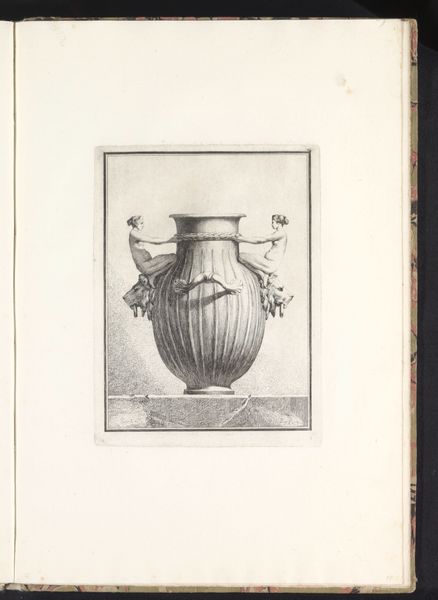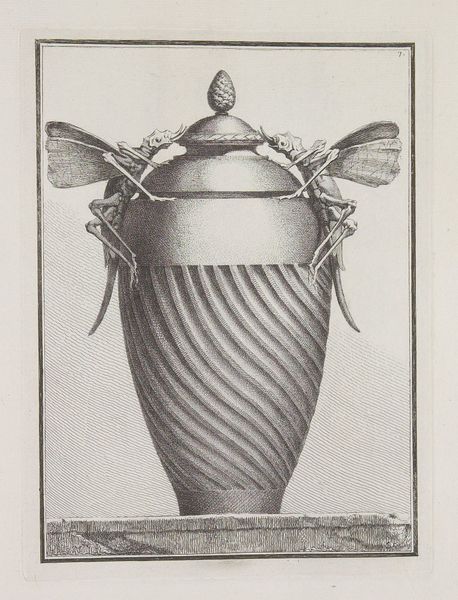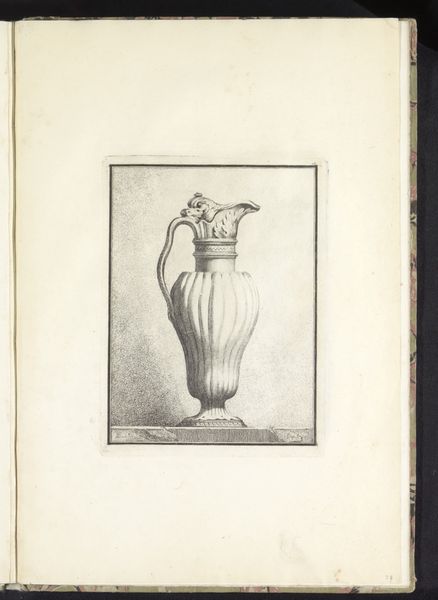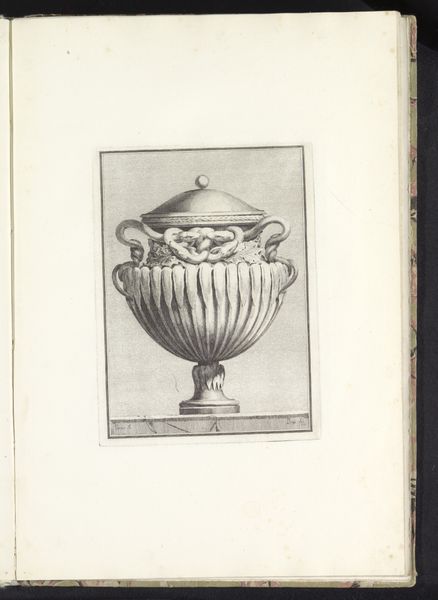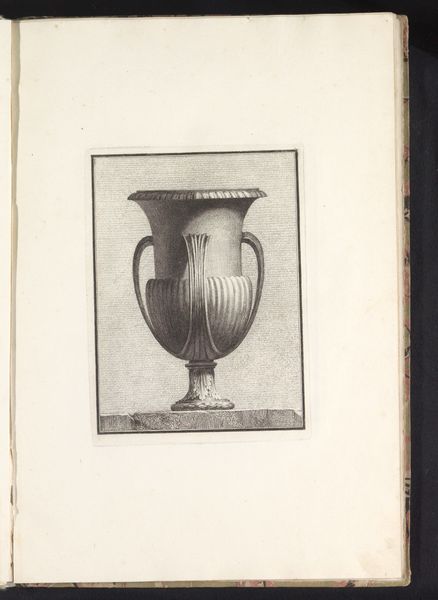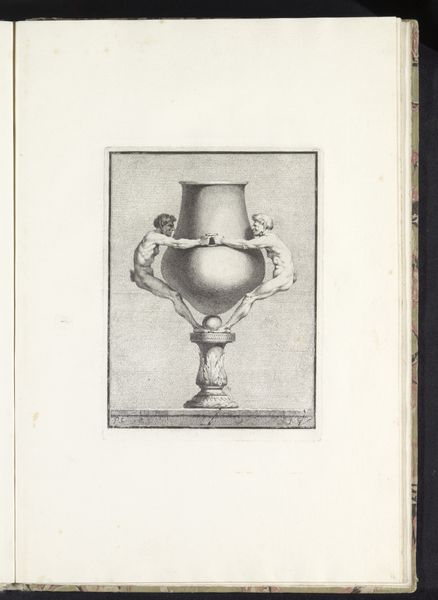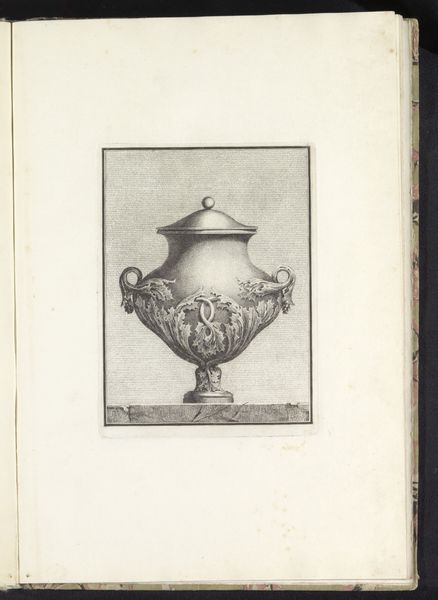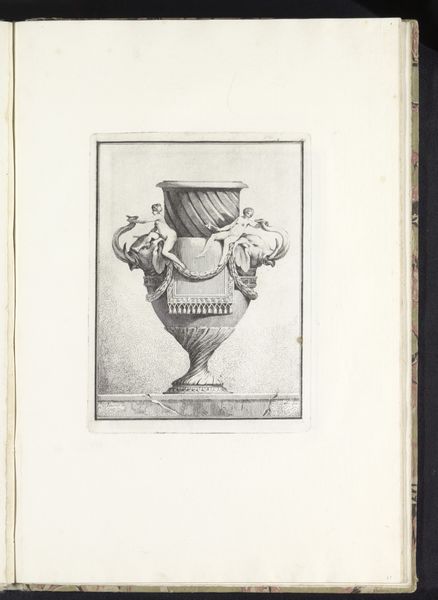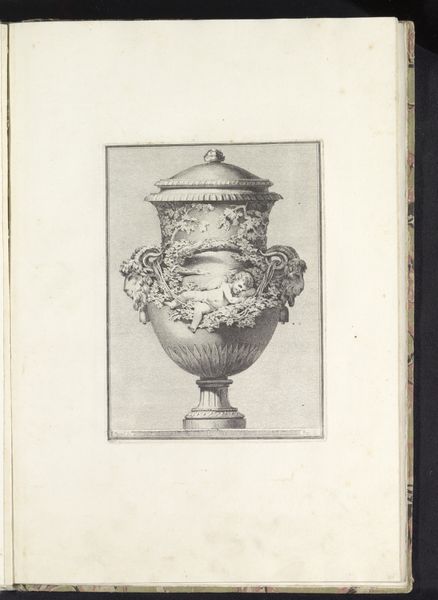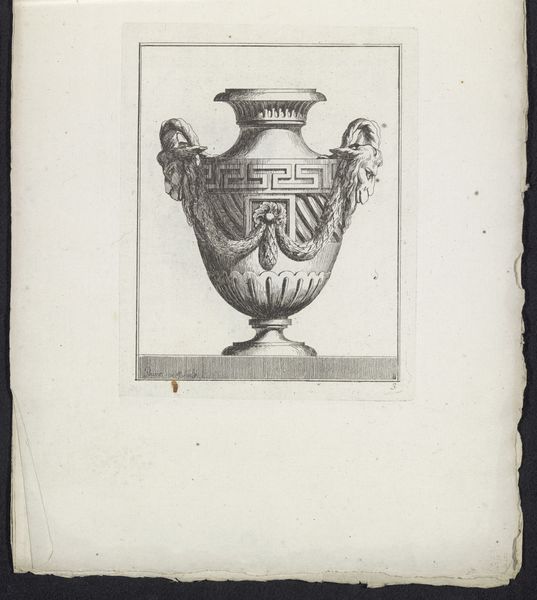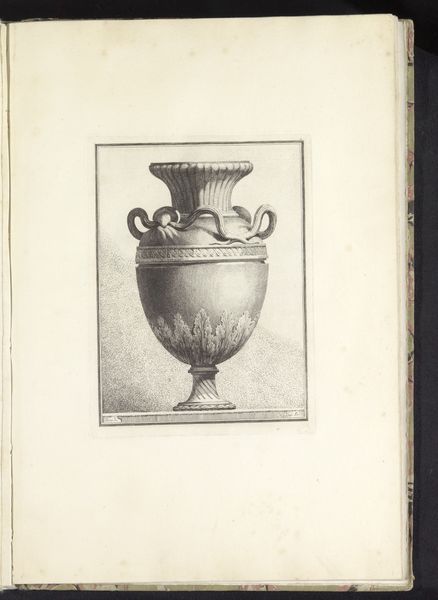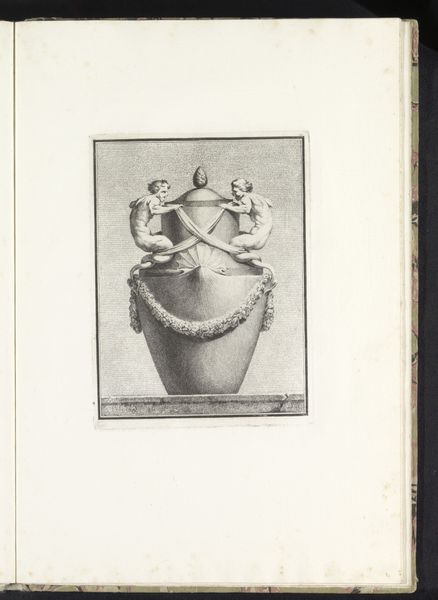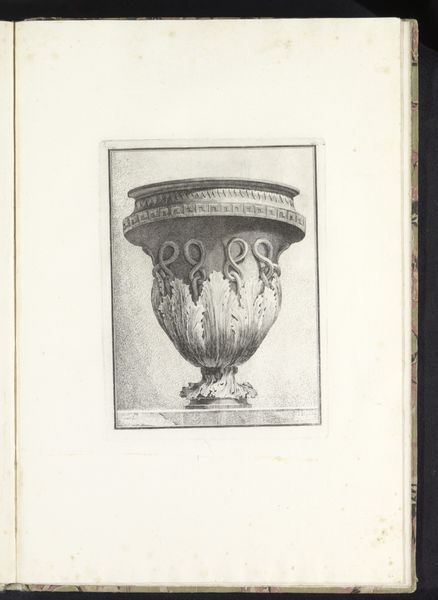
Dimensions: height 223 mm, width 169 mm
Copyright: Rijks Museum: Open Domain
Editor: So, this is “Pot met deksel met insecten als ornament,” a pen and ink drawing from 1764 by Benigno Bossi, currently held at the Rijksmuseum. What strikes me is this bizarre contrast: such a classical vase shape adorned with what looks like giant, somewhat menacing, insects. How do you interpret this juxtaposition? Curator: It's fascinating, isn’t it? Beyond the initial shock, let’s consider what Bossi, as an ornamental designer, might be subtly critiquing. This was the height of the Baroque period. Ornamentation was, literally and figuratively, layered onto structures of power. Is Bossi using these insects – traditionally symbols of decay and the fleeting nature of life – to suggest a potential collapse of such elaborate, perhaps even oppressive, systems? Does this piece speak to a growing discontent with excess and a yearning for simpler forms? Editor: That’s a really interesting angle! I hadn't considered it as a form of social commentary, but the insect imagery as a potential symbol of societal decay makes sense. Is it possible that Bossi's use of insects is intended ironically rather than as straightforward criticism? Curator: Absolutely. The Baroque was also a period of incredible scientific advancement, specifically in the field of entomology. These detailed insect depictions could be read as emblems of scientific curiosity transforming our perception of power dynamics. Think about how understanding the minute details of seemingly insignificant beings can provide new lenses to challenge those same long held structures. What could something small reveal? Editor: That gives me a completely new perspective. It moves beyond the visual strangeness and suggests this intricate layering of social commentary and scientific inquiry. Curator: Exactly. These period pieces were often so dense in messaging! Reflecting on today, I can't help but consider how "Pot met deksel met insecten als ornament” fits within today's conversations surrounding power and structure. Editor: Yes, by challenging conventional aesthetics, the artist encouraged others to think about power structures from different perspectives, even to this day.
Comments
No comments
Be the first to comment and join the conversation on the ultimate creative platform.
